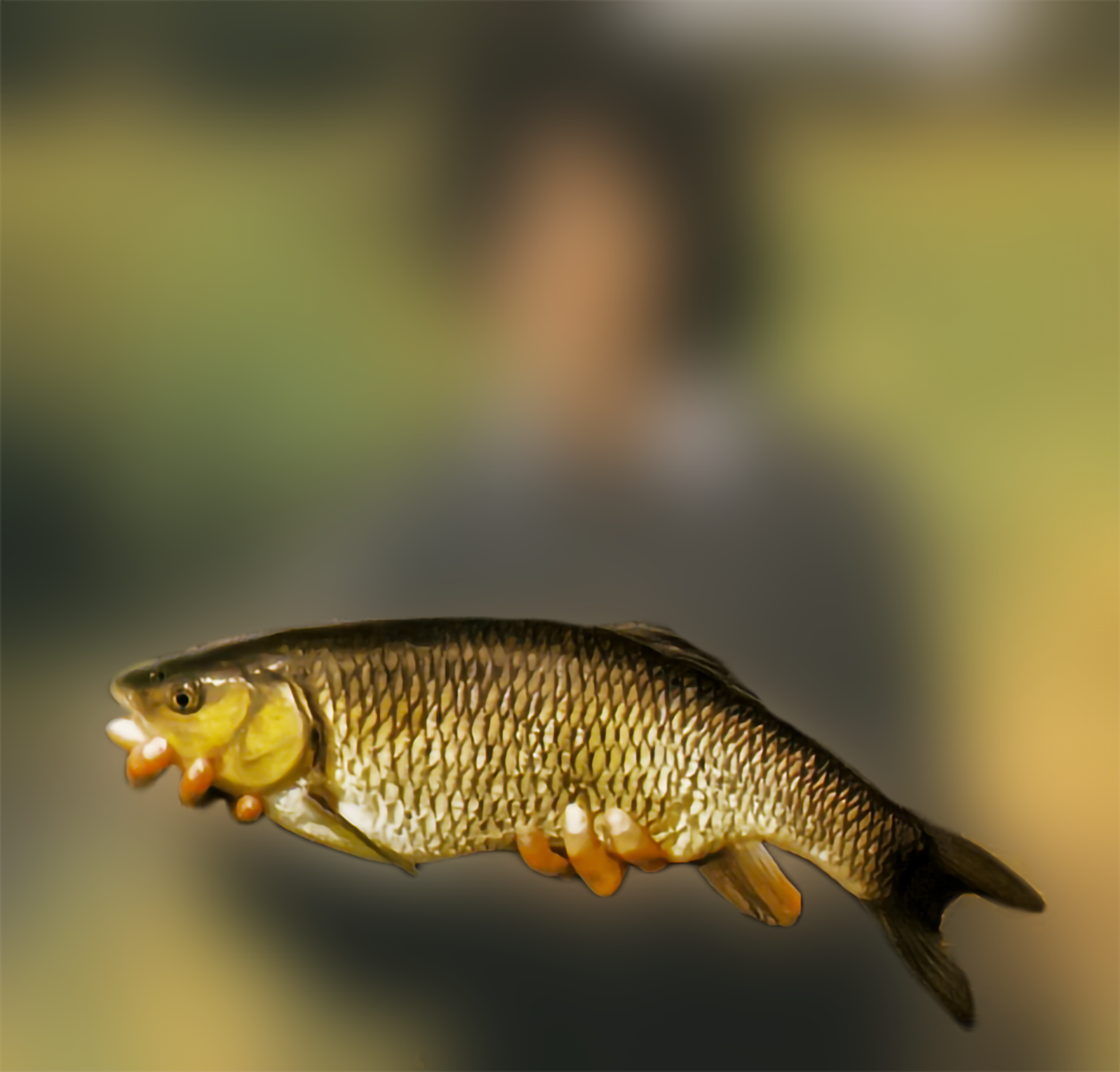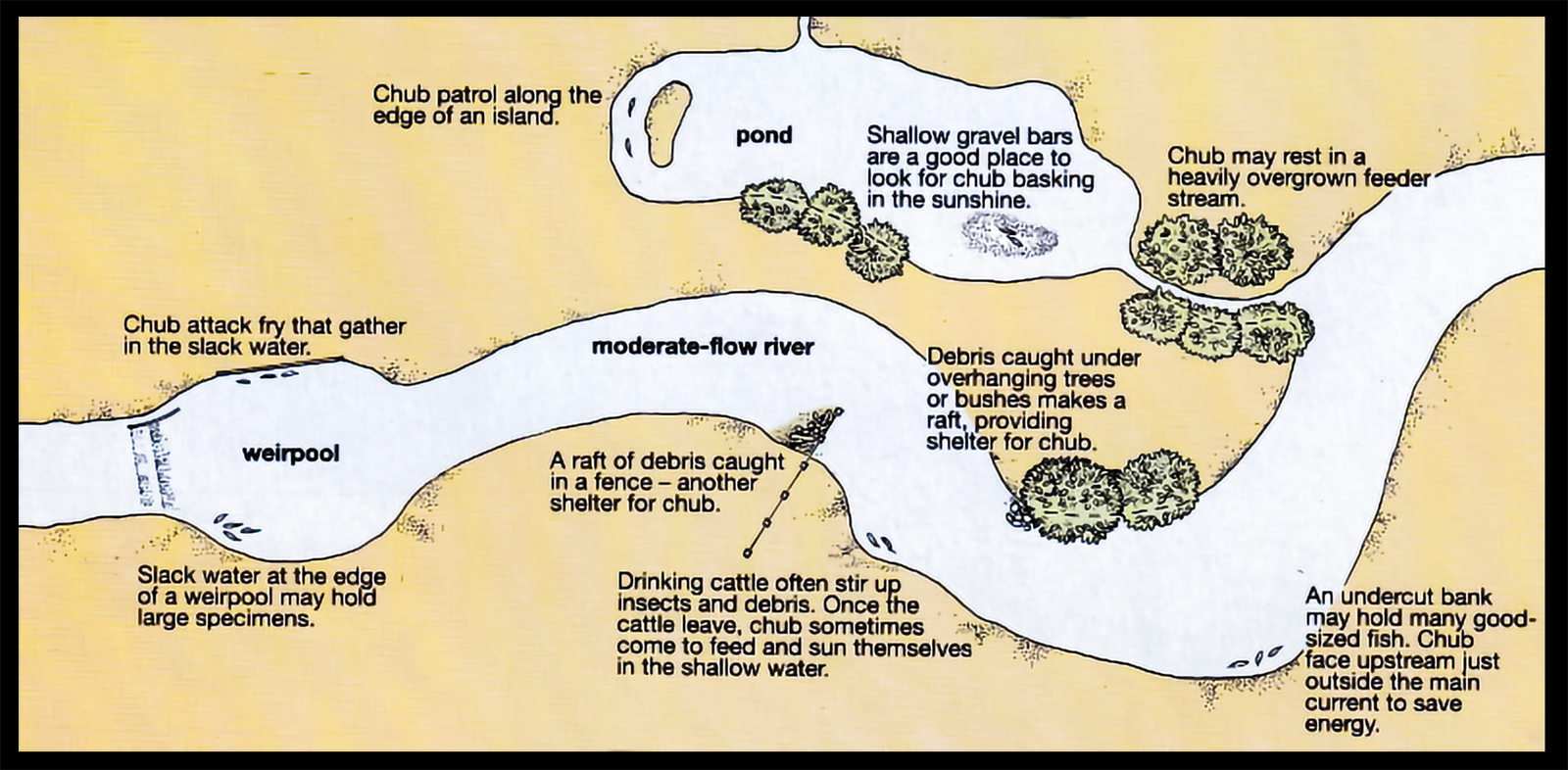

"The Chub, found mainly in England, has a large mouth to accommodate its voracious appetite, and pound for pound it's one of the best fighting fish you'll hook."
Of all the freshwater fish found in the UK, the Chub is amongst the shyest of them all. They provide excellent sport throughout the year and like the Perch, provide the angler with a 'roving day'.

Chub (Leuciscus cephalus)
Lifespan: 10-12 years
Average Weight - A decent sized Chub is anything between 3 lb and 5 lb (1.4kg-2.3 kg) and will provide a swashbuckling fight. Chub caught during the winter make for an even better tussle.
Distribution - Chub are found throughout England but they don't thrive in the clear, cold rivers of Scotland and are rare in Ireland.
When in search of Chub, you cannot simply sit in the same spot all day long and expect to take fish after fish. A lucky streak would be merely taking two or three from a single shoal without the remainder becoming scared.
In many ways Chub look like Dace at first glance.
Both have black tails and grey or green backs. Chub, however, usually have 'brassy' coloured flanks, orange anal fins and big mouths, and they grow much larger than dace.
The Chub's Dorsal Fins are convex (arched) while those of the Dace are slightly indented (concave).
Small Chub of 3in (7.5cm) or so eat large invertebrates, Worms and Fry (recently hatched spawn).
Chub are omnivorous; that is, they eat Fish, Insects and Vegetable Matter (such as Silkweed, Berries and Bread). In fact, if an Elderberry Tree is overhanging a river bank, for example, Chub often gorge themselves with ripe Berries.
Fish of over 3lb (1.4kg) may eat small Bullheads, Minnows, Roach and Dace.
Chub don't have teeth in their mouth; their mighty Pharyngeal Teeth, located at the base of the throat, can crush just about any food item.
This includes Crayfish which, despite their hard shell, are quickly demolished.
Running water is the best place to look for Chub - especially in any steady-flowing, low land or middle reach of river.
Chub don't thrive in upland waters, which are more suited to Trout, Salmon and Grayling. Chub are a 'retiring fish', and they rely much on the shelter of overhanging trees, rafts of debris, underwater weeds and undercut banks - cover is an essential part of their habitat.
During the afternoon, however, Chub often sun themselves.
You can see them on clear, windless summer days, but be careful when approaching them, for they spook easily. Chub may also spook if you try to cast directly above them. Casting a yard or so upstream and in front of the Chub often does the trick.
Because Chub are adaptable, they can also survive in still waters; it's here where they grow 'fat as barrels'. Crystal-clear gravel pits contain many large specimens of Chub. On shallow gravel bars between 30-90cm (1-3ft) deep you can find Chub basking in the sun.
Chub usually spawn between April and June, depending on the temperature of the water.
The adult Chub swim upstream to shallow gravelly runs and breed only in flowing water. Each Female Chub can shed up to 100,000 eggs over gravel, weeds or debris on the river bed.
After eight to ten days the eggs hatch. The Fry feed in shoals on microscopic organisms (plankton). As they grow, they remain in shoals. Even the mature Chub group together. Only the very large fish become solitary.

Taken from a small, slow moving river, this excellent Chub weighed 4lb 9oz (2.1kg). Trotting Maggots is one of the most popular means of catching Chub in rivers.
